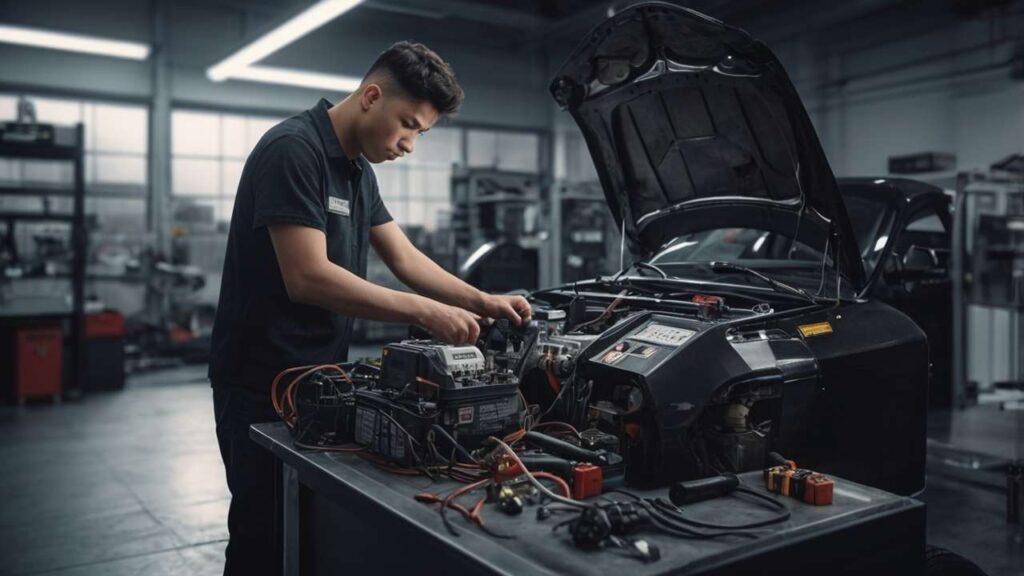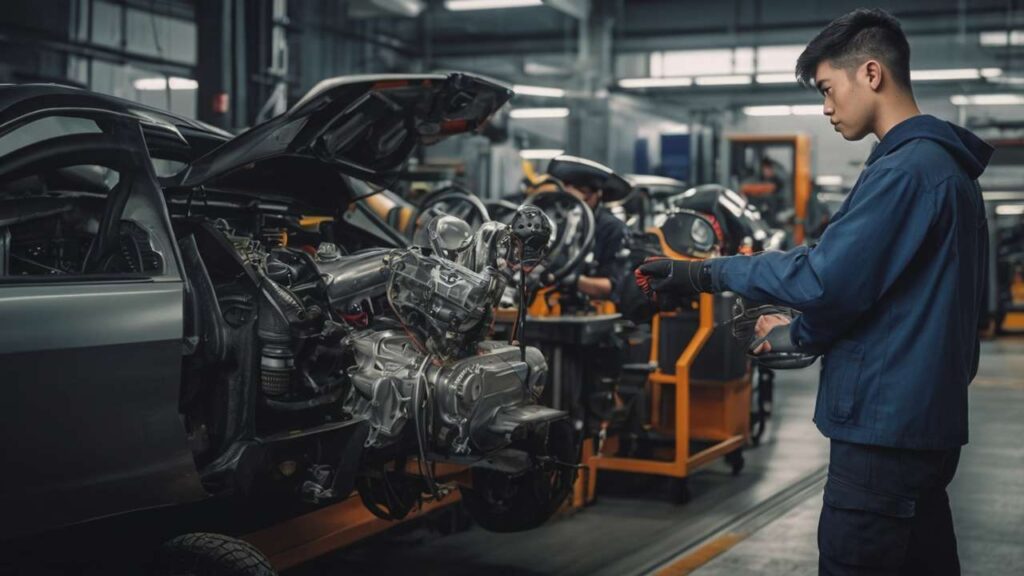Brakes don’t often get the attention they deserve until something feels off—like a squeal, a soft pedal, or that unnerving grind that makes your stomach drop. A neighbor of mine once ignored his brake warning light for weeks, convinced it was just a sensor glitch. By the time he drove into a shop, his rotors were scorched, and the repair bill was almost triple what a simple inspection would have cost. That painful experience is exactly why understanding the difference between disc brakes vs. drum brakes isn’t just “car nerd” knowledge—it’s a practical way to protect both your safety and your wallet.
Disc brakes vs. drum brakes is a comparison that gets thrown around by mechanics and automotive experts, but many drivers only know the surface-level difference. In truth, the design, maintenance, and performance of these systems play a big role in how your car handles daily stress, sudden stops, and long-term wear. And while most modern vehicles now rely on disc brakes at least in the front, drum brakes haven’t completely disappeared. They’re still used in rear assemblies, older models, and even heavy-duty trucks.
According to trusted brake specialists in North Carolina, the type of braking system your car uses should influence not just your repair decisions but also how you approach driving habits. And that insight is key to building trust in professional brake services, like those offered by top-quality brake experts in North Carolina.
How Disc Brakes Work
Think of disc brakes like squeezing a spinning dinner plate with your fingers, except instead of fingers, there are calipers with pads. The spinning plate is the rotor, directly attached to your wheel. When you press the brake pedal, hydraulic pressure pushes the brake pads against the rotor, creating friction and stopping your car.
The magic of disc brakes lies in heat dissipation. Friction naturally generates heat, and rotors are designed to shed it quickly—often with vented grooves or slotted designs. That’s why even during heavy braking, like descending a steep North Carolina mountain road, disc brakes can stay cooler and maintain stronger stopping power.
One trusted mechanic I spoke with described disc brakes as “self-cleaning.” Rain, dirt, or debris tends to fling off rotors, reducing the risk of buildup. That’s part of why disc brakes have become the standard for most modern cars, particularly on the front wheels where the most stopping force is required.
How Drum Brakes Work
Now picture a soup can turned on its side. Inside that cylinder (the “drum”), you’ve got brake shoes that press outward against the drum walls when you hit the pedal. That outward pressure creates friction, which slows the wheel.
Drum brakes actually have strong stopping force when cool, but the issue is heat. Because everything is enclosed in the drum, heat tends to get trapped, which can lead to brake fade on long downhill drives. That’s why some trucks or older cars that use drum brakes on the rear may still struggle under extreme conditions.
An old Chevy pickup I once helped restore had rear drum brakes. While they were cheaper to maintain, we noticed that after a long stretch of towing, the brakes got spongy. The mechanic explained that drum brakes expand with heat, creating a delay in response. It was a real-world lesson in why drum brakes are slowly being phased out for high-performance needs.
Disc Brakes vs. Drum Brakes: Pros and Cons
| Feature | Disc Brakes | Drum Brakes |
|---|---|---|
| Stopping Power | Strong, consistent, especially under high heat | Good at low speeds, weaker under heavy loads |
| Heat Dissipation | Excellent (vented, slotted rotors available) | Poor—heat builds up inside drum |
| Durability | Pads wear faster but are easier to replace | Shoes last longer, but full replacement is trickier |
| Cost | Higher initial cost, lower long-term maintenance | Cheaper upfront, but can fail under stress |
| Cleaning | Self-cleaning, resists water and debris | Prone to dust, water, and rust buildup |
| Vehicle Use | Standard in modern cars, especially front wheels | Common in older vehicles, rear wheels, or trucks |
Where You’ll Find Each System
Most modern sedans, SUVs, and sports cars use disc brakes on all four wheels. However, many budget-friendly cars and light trucks still use a combination: disc brakes in the front and drum brakes in the rear. Why? Cost savings. Rear brakes don’t handle as much stopping force, so manufacturers often save money by using drums.
Heavy-duty trucks sometimes rely on drum brakes because they’re durable and can handle extended wear before replacement. Meanwhile, performance cars—think Mustangs or Corvettes—almost always feature advanced disc systems with upgraded rotors and calipers.
For daily drivers in North Carolina, it’s worth knowing what’s on your car because it affects not only performance but also the type of maintenance you’ll need.
Maintenance Differences
Disc brakes are generally easier for mechanics to service. Pads can be swapped in under an hour with basic tools, and rotors, if warped, can be resurfaced or replaced. DIY enthusiasts often try replacing their own pads, though professional service is strongly recommended for proper safety torque and fluid bleeding.
Drum brakes are more complicated. The springs and adjusters inside can be tricky even for skilled DIYers. If something is misaligned, the brakes may drag or fail to engage properly. For this reason, experts often advise leaving drum brake service to professional brake specialists.
As one North Carolina brake technician put it:
“You don’t want your first brake repair attempt to be on drum brakes. They’re like a puzzle box that can bite back if you set one spring wrong.”
The Bigger Picture: Safety and Cost
Delaying brake repair is risky. The Cost of Waiting: How Ignoring Brake Issues Can Empty Your Wallet illustrates how a $200 pad replacement can snowball into a $900 rotor-and-caliper overhaul. And that’s not even counting the risk of an accident.
Early detection is key. The Early Warning Signs of Brake Trouble: Don’t Wait for the Grinding Noise makes a great point: by the time you hear grinding, you’re already paying for damage that could have been prevented. Similarly, a trusted shop will also inspect brake fluid, a detail often overlooked. As Brake Fluid 101: The Unsung Hero of Your Vehicle’s Stopping Power explains, fluid is just as critical as pads or rotors.
Some drivers are tempted by DIY, but DIY vs. Pro: Why Brake Repair is Best Left to North Carolina’s Experts reminds us that safety systems deserve professional hands. A proper brake inspection, like those offered in North Carolina brake services, isn’t just about pads—it’s a holistic check of rotors, lines, and fluid that builds long-term trust between you and your mechanic.
Case Study: A Real-Life Save
One customer in Raleigh brought in his Honda Civic with a soft brake pedal. He assumed it was just low fluid. After inspection, the shop found worn front pads, a warped rotor, and leaking rear drum cylinders. The repair was about $650, but the mechanic explained that if he had waited even two weeks longer, the caliper damage could have doubled the bill. That kind of transparency builds confidence in expert service providers, which is exactly what drivers should look for.
Future Topics for Deeper Understanding
Expanding your knowledge doesn’t stop at disc brakes vs. drum brakes. Other crucial areas deserve attention: how regenerative braking systems in hybrid cars change the game, why ABS sensors often fail in winter climates, or the role of electronic brake force distribution in modern vehicles. These aren’t just “tech topics”—they directly impact your driving safety. Covering them in future guides will continue building a trusted resource for car owners who want clarity instead of jargon.
FAQs
1. Which is better: disc brakes or drum brakes?
Disc brakes generally provide stronger and more consistent stopping power, while drum brakes are cheaper and sometimes last longer under light use.
2. How do I know if my car has drum brakes?
Check your rear wheels—if you don’t see a rotor behind the wheel spokes, chances are you have drum brakes. Your owner’s manual also lists the brake type.
3. Can I replace drum brakes with disc brakes?
Yes, conversion kits exist, but they can be costly. A professional mechanic can advise whether the upgrade makes sense for your vehicle.
Understanding disc brakes vs. drum brakes isn’t about showing off at the auto shop—it’s about making smarter, safer choices for your vehicle and your budget. By recognizing how each system works, weighing their pros and cons, and respecting the value of professional inspections, you’re not just protecting your car—you’re protecting your family every time you hit the road.
If you found this guide helpful, please use the share buttons below to spread the word on your social media. It might just save someone else from the painful mistake of waiting too long to check their brakes.


